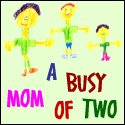 It is time for a FIRST Wild Card Tour book review! If you wish to join the FIRST blog alliance, just click the button. We are a group of reviewers who tour Christian books. A Wild Card post includes a brief bio of the author and a full chapter from each book toured. The reason it is called a FIRST Wild Card Tour is that you never know if the book will be fiction, non~fiction, for young, or for old...or for somewhere in between! Enjoy your free peek into the book!
It is time for a FIRST Wild Card Tour book review! If you wish to join the FIRST blog alliance, just click the button. We are a group of reviewers who tour Christian books. A Wild Card post includes a brief bio of the author and a full chapter from each book toured. The reason it is called a FIRST Wild Card Tour is that you never know if the book will be fiction, non~fiction, for young, or for old...or for somewhere in between! Enjoy your free peek into the book!You never know when I might play a wild card on you!
Today's Wild Card author is:
and the book:
So Long, Status Quo: What I Learned From Women Who Changed the World
Beacon Hill Press of Kansas City (February 15, 2009)
ABOUT THE AUTHOR:
 SUSY FLORY grew up on the back of a quarter horse in an outdoorsy family in Northern California and she's not afraid to dive into the trenches to experience firsthand whatever she's writing about. If that means smuggling medical supplies into Cuba on a humanitarian trip or sitting down to coffee to talk about faith with a practicing witch, she's there with a listening ear and notebook in hand.
SUSY FLORY grew up on the back of a quarter horse in an outdoorsy family in Northern California and she's not afraid to dive into the trenches to experience firsthand whatever she's writing about. If that means smuggling medical supplies into Cuba on a humanitarian trip or sitting down to coffee to talk about faith with a practicing witch, she's there with a listening ear and notebook in hand.Susy's creative nonfiction features a first person journalistic style with a backbone of strong research and a dash of dry wit. She attended Biola University and UCLA, where she received degrees in English and psychology. She has a background in journalism, education, and communications. Her first book, Fear Not Da Vinci, released in 2006.
Visit the author's website.
Product Details:
List Price: $13.99
Paperback: 160 pages
Publisher: Beacon Hill Press of Kansas City (February 15, 2009)
Language: English
ISBN-10: 0834124386
ISBN-13: 978-0834124387
AND NOW...THE FIRST CHAPTER:

Introduction
Addicted to comfort
“I could not, at any age, be content to take my place in a corner by the fireside
and simply look on. Life was meant to be lived. Curiosity must be kept alive …
One must never, for whatever reason, turn his back on life.”
– Eleanor Roosevelt, on her 77th birthday
I love my couch. It’s covered in a squishy soft velvety material the color of oatmeal laced with honey and the cushions are fat. Three big loose pillows rest against the back, the material woven into an exotic, vaguely Eastern pattern of impressionistic flowers and trees in tawny gold and lapis blue. My favorite spot in the entire house is the far end of this couch, with two smaller pillows behind my back and my legs stretched out long ways. I do this every day.
For a while we had an uptight couch. Bright Colonial red with little blue and yellow flowers, it reminded me of the calico dresses Melissa Gilbert used to wear on Little House on the Prairie. The fabric was quilted in the shape of puzzle pieces and the back rose straight up, pierced by a row of buttons. A boxy pleated strip of fabric ran along the bottom. It was really uncomfortable and almost impossible to take a nap in. That couch didn’t want you sitting there very long; it was a little Puritanical, wanting you up and around, taking care of business. We sold it at a garage sale for $20. Good riddance.
But the comfy oatmeal couch—it loves you. It calls you to sink down into comfort, and to stay awhile. A long while.
From the couch I can see the kitchen where my kids are grating cheese for quesadillas or searching the fridge for leftover pizza. I can look out the back window, at the drooping branches of the monstrous eucalyptus tree overhanging the back yard. Or, I can stare at the ceiling fan, slowly circling overhead. But, really, I hardly ever look at anything but words. Books, newspapers, catalogs, magazines, letters from friends—those are the things I look at when I’m stretched out on the couch.
Sundays are my absolutely favorite. After church, we eat lunch at the taqueria, then head home. The newspapers await; I don’t want to waste time changing my clothes so I head straight for the couch. News comes first, then business, travel, entertainment, and the Sunday magazine. Last are the sale papers: Target, Best Buy, Macy’s.
By this time I’m sleepy, melting a bit around the edges. My head grows heavy and I turn, curl up, and snuggle into the cushions. I fall asleep, papers crinkly around me.
A while ago my teenage son, just to aggravate me, staked a claim on the oatmeal couch. He’d race home after church in his little pick-up truck and head in the door, kicking off his shoes and diving into my favorite comfy spot in one gangly flop. He made it his goal to be asleep, limbs a sprawl, before I even made it inside the house. A few times I tried to extricate him but it was useless, like trying to wrestle a wire hanger out of a tangled pile.
I decided to wait him out and so after he slept on the couch a few Sundays, he gave it up. He had better things to do, usually involving his computer.
Things returned to normal, the oatmeal couch remembered the shape of my behind, and I took to snuggling into the tawny-lapis pillows once again.
It was safe, my velvety couch cave.
Just like my life.
In one of my favorite books, A Girl Named Zippy, Haven Kimmel writes about her mother, always on the couch with a cardboard box of books by her side. There she was, forever reading a book and waving at her children as they went back and forth, in and out of the house, busily doing whatever kids in a small Indiana town did. She stayed there, curled up on the couch, peacefully reading her books as her husband ran around who-knows-where, maybe coon hunting, gambling away his paycheck, or sleeping with the divorced woman across town. She was comfortable there. Zippy unexpectedly became a bestseller and Kimmel traveled around giving talks and signing books. The one question everyone asked her was, “Did your mother ever get up off the couch?”
I don’t live in Indiana; I live in a suburb of San Francisco. My kids don’t run in and out of the house; they pretty much stay put. My husband is a hard working, non-gambling, faithful guy who pays the bills. And my life is pretty good. But I have lived most of it lodged safely in the corner of my couch.
My secure couch cocoon was really a picture of what I had let my life become. Lethargic, sleepy, with a love for security and for comfort, I lived for self. I avoided suffering at all costs. I didn’t want to ever do anything uncomfortable. I think I was addicted to comfort.
My journey out of my couch-life started years ago when I was a college student on vacation, idly looking around a gift shop. Flicking through a box full of enameled metal signs, I came across one that read “We Can Do It!” Underneath was a portrait of a woman, looking sort of like Lucille Ball in her cleaning garb, hair up in a red bandanna. Glossy lips, a little pouty, with arched eyebrows and thick eyelashes. She wore a blue collared shirt, sleeve rolled up over a flexed bicep, toned and powerful. Her eyes were wide open, focused, determined. Who was she? I hadn’t a clue, but I bought the sign and installed it in a place of honor by my desk.
Later, when I was married, the mother of two small children and too busy changing diapers to sit much on the couch yet, I learned she was called Rosie the Riveter. She, and six million other women who toiled in factories while their men were off fighting in World War II, changed the world. Even now, as I look at the old enamel sign next to my desk, I’m haunted by the determination in the line of her jaw and the resolve in the curl of her fist. I wanted to be like her.
But the couch called. I forgot the sign; it migrated to the back of my bookcase and I took a part time job teaching English at a private high school. My kids were in school, my husband was fighting up the corporate ladder, and with the days sometimes a blur of homework, basketball practice, and ballet class, I hoarded my couch time.
Funny, though. It wasn’t satisfying. I just couldn’t ever seem to get enough.
And then, one day, stretched out reading the Sunday paper, I saw Rosie again. It was a full-page department store ad. Across the top ran a banner: “Help end hunger.” Something had changed. Rosie looked a little more glamorous than I remembered. The “can” in the “We CAN Do It!” was underlined and capitalized to emphasize the can of food in her fist. I unfolded the page and examined it; it was an advertisement for National Hunger Awareness day. If you made a $5 donation to the department store, they would in return give you a 15% coupon for regular, sale and clearance-priced merchandise. It’s our thanks to you for helping to relieve hunger in our communities.
I pondered the page; something didn’t quite make sense. Somehow, by partnering with Rosie to spend money at the department store, you would help to relieve hunger. Rosie and her factory worker sisters had changed the world by serving for low pay and little recognition on factory lines during a war. They had sacrificed personal comfort and convenience for a cause greater than themselves, a cause they believed in and sweated and grew calluses for. Now the department store was asking me to be like Rosie, tie up my hair, bare my biceps and leave my couch, so I could … shop? You’ve got to be kidding.
But my irritation that day over the hijacking of the Rosie the Riveter image piqued my curiosity. Who was Rosie? Was she a real person? Was she still alive? What would she think about the ways her image, once meant to encourage and inspire the Nazi-fighting women of World War II, had been used for merchandising? I was intrigued by her determination and I decided to roll up my sleeves and get to the bottom of her story. So I did. And after Rosie I found eight other women, amazing women, who changed the world. I found women who, with grit and guts, made their lives add up to something much more than just a satisfying Sunday nap. And somehow, in the finding, the oatmeal couch lost its allure.
I wanted to feel alive, to experience something more deep and dangerous than my middle class life. I wanted more than a Ford Expedition SUV with leather seats or a 401K groaning with employer contributions. I craved something beyond Ralph Lauren Suede paint or a giant glossy red Kitchen Aid mixer. I was ready to wake up from a very long nap and do something meaningful.
So this is the story of how, slowly, I began to get up off the couch of my boring, safe, sheltered, vanilla existence to something more real, sharper, in focus. Rosie led the way. Along came Eleanor, and Jane. Then Harriet, Elizabeth, and more. These women became mentors calling me to a different kind of life. Passionate for change, each woman sacrificed money, love, comfort, time, and, ultimately, self, to make a difference to thousands, maybe millions of people.
Living like the women who changed the world is not easy, but it’s good. It feels right. It is satisfying.
This is how I got up off the couch and tried, with much fear and trembling, to make a difference in my world. And I’ll never go back.
Addicted to comfort
“I could not, at any age, be content to take my place in a corner by the fireside
and simply look on. Life was meant to be lived. Curiosity must be kept alive …
One must never, for whatever reason, turn his back on life.”
– Eleanor Roosevelt, on her 77th birthday
I love my couch. It’s covered in a squishy soft velvety material the color of oatmeal laced with honey and the cushions are fat. Three big loose pillows rest against the back, the material woven into an exotic, vaguely Eastern pattern of impressionistic flowers and trees in tawny gold and lapis blue. My favorite spot in the entire house is the far end of this couch, with two smaller pillows behind my back and my legs stretched out long ways. I do this every day.
For a while we had an uptight couch. Bright Colonial red with little blue and yellow flowers, it reminded me of the calico dresses Melissa Gilbert used to wear on Little House on the Prairie. The fabric was quilted in the shape of puzzle pieces and the back rose straight up, pierced by a row of buttons. A boxy pleated strip of fabric ran along the bottom. It was really uncomfortable and almost impossible to take a nap in. That couch didn’t want you sitting there very long; it was a little Puritanical, wanting you up and around, taking care of business. We sold it at a garage sale for $20. Good riddance.
But the comfy oatmeal couch—it loves you. It calls you to sink down into comfort, and to stay awhile. A long while.
From the couch I can see the kitchen where my kids are grating cheese for quesadillas or searching the fridge for leftover pizza. I can look out the back window, at the drooping branches of the monstrous eucalyptus tree overhanging the back yard. Or, I can stare at the ceiling fan, slowly circling overhead. But, really, I hardly ever look at anything but words. Books, newspapers, catalogs, magazines, letters from friends—those are the things I look at when I’m stretched out on the couch.
Sundays are my absolutely favorite. After church, we eat lunch at the taqueria, then head home. The newspapers await; I don’t want to waste time changing my clothes so I head straight for the couch. News comes first, then business, travel, entertainment, and the Sunday magazine. Last are the sale papers: Target, Best Buy, Macy’s.
By this time I’m sleepy, melting a bit around the edges. My head grows heavy and I turn, curl up, and snuggle into the cushions. I fall asleep, papers crinkly around me.
A while ago my teenage son, just to aggravate me, staked a claim on the oatmeal couch. He’d race home after church in his little pick-up truck and head in the door, kicking off his shoes and diving into my favorite comfy spot in one gangly flop. He made it his goal to be asleep, limbs a sprawl, before I even made it inside the house. A few times I tried to extricate him but it was useless, like trying to wrestle a wire hanger out of a tangled pile.
I decided to wait him out and so after he slept on the couch a few Sundays, he gave it up. He had better things to do, usually involving his computer.
Things returned to normal, the oatmeal couch remembered the shape of my behind, and I took to snuggling into the tawny-lapis pillows once again.
It was safe, my velvety couch cave.
Just like my life.
In one of my favorite books, A Girl Named Zippy, Haven Kimmel writes about her mother, always on the couch with a cardboard box of books by her side. There she was, forever reading a book and waving at her children as they went back and forth, in and out of the house, busily doing whatever kids in a small Indiana town did. She stayed there, curled up on the couch, peacefully reading her books as her husband ran around who-knows-where, maybe coon hunting, gambling away his paycheck, or sleeping with the divorced woman across town. She was comfortable there. Zippy unexpectedly became a bestseller and Kimmel traveled around giving talks and signing books. The one question everyone asked her was, “Did your mother ever get up off the couch?”
I don’t live in Indiana; I live in a suburb of San Francisco. My kids don’t run in and out of the house; they pretty much stay put. My husband is a hard working, non-gambling, faithful guy who pays the bills. And my life is pretty good. But I have lived most of it lodged safely in the corner of my couch.
My secure couch cocoon was really a picture of what I had let my life become. Lethargic, sleepy, with a love for security and for comfort, I lived for self. I avoided suffering at all costs. I didn’t want to ever do anything uncomfortable. I think I was addicted to comfort.
My journey out of my couch-life started years ago when I was a college student on vacation, idly looking around a gift shop. Flicking through a box full of enameled metal signs, I came across one that read “We Can Do It!” Underneath was a portrait of a woman, looking sort of like Lucille Ball in her cleaning garb, hair up in a red bandanna. Glossy lips, a little pouty, with arched eyebrows and thick eyelashes. She wore a blue collared shirt, sleeve rolled up over a flexed bicep, toned and powerful. Her eyes were wide open, focused, determined. Who was she? I hadn’t a clue, but I bought the sign and installed it in a place of honor by my desk.
Later, when I was married, the mother of two small children and too busy changing diapers to sit much on the couch yet, I learned she was called Rosie the Riveter. She, and six million other women who toiled in factories while their men were off fighting in World War II, changed the world. Even now, as I look at the old enamel sign next to my desk, I’m haunted by the determination in the line of her jaw and the resolve in the curl of her fist. I wanted to be like her.
But the couch called. I forgot the sign; it migrated to the back of my bookcase and I took a part time job teaching English at a private high school. My kids were in school, my husband was fighting up the corporate ladder, and with the days sometimes a blur of homework, basketball practice, and ballet class, I hoarded my couch time.
Funny, though. It wasn’t satisfying. I just couldn’t ever seem to get enough.
And then, one day, stretched out reading the Sunday paper, I saw Rosie again. It was a full-page department store ad. Across the top ran a banner: “Help end hunger.” Something had changed. Rosie looked a little more glamorous than I remembered. The “can” in the “We CAN Do It!” was underlined and capitalized to emphasize the can of food in her fist. I unfolded the page and examined it; it was an advertisement for National Hunger Awareness day. If you made a $5 donation to the department store, they would in return give you a 15% coupon for regular, sale and clearance-priced merchandise. It’s our thanks to you for helping to relieve hunger in our communities.
I pondered the page; something didn’t quite make sense. Somehow, by partnering with Rosie to spend money at the department store, you would help to relieve hunger. Rosie and her factory worker sisters had changed the world by serving for low pay and little recognition on factory lines during a war. They had sacrificed personal comfort and convenience for a cause greater than themselves, a cause they believed in and sweated and grew calluses for. Now the department store was asking me to be like Rosie, tie up my hair, bare my biceps and leave my couch, so I could … shop? You’ve got to be kidding.
But my irritation that day over the hijacking of the Rosie the Riveter image piqued my curiosity. Who was Rosie? Was she a real person? Was she still alive? What would she think about the ways her image, once meant to encourage and inspire the Nazi-fighting women of World War II, had been used for merchandising? I was intrigued by her determination and I decided to roll up my sleeves and get to the bottom of her story. So I did. And after Rosie I found eight other women, amazing women, who changed the world. I found women who, with grit and guts, made their lives add up to something much more than just a satisfying Sunday nap. And somehow, in the finding, the oatmeal couch lost its allure.
I wanted to feel alive, to experience something more deep and dangerous than my middle class life. I wanted more than a Ford Expedition SUV with leather seats or a 401K groaning with employer contributions. I craved something beyond Ralph Lauren Suede paint or a giant glossy red Kitchen Aid mixer. I was ready to wake up from a very long nap and do something meaningful.
So this is the story of how, slowly, I began to get up off the couch of my boring, safe, sheltered, vanilla existence to something more real, sharper, in focus. Rosie led the way. Along came Eleanor, and Jane. Then Harriet, Elizabeth, and more. These women became mentors calling me to a different kind of life. Passionate for change, each woman sacrificed money, love, comfort, time, and, ultimately, self, to make a difference to thousands, maybe millions of people.
Living like the women who changed the world is not easy, but it’s good. It feels right. It is satisfying.
This is how I got up off the couch and tried, with much fear and trembling, to make a difference in my world. And I’ll never go back.





















No comments:
Post a Comment